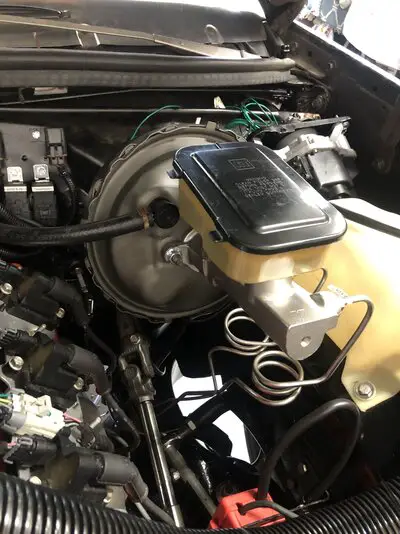Brakes are hydraulic systems. Doesn't matter if the master is tilted. It could be straight up and down as still work assuming you could get the pushrod to work at that angle. Having it tilted could make it a pain to bleed though.
But the same hydraulic principles apply. You have a master cylinder and a slave cylinder - in this case, the caliper pistons. Surface area on both ends matter. You push on the pedal exerting force in pounds on the master cylinder which creates pressure in the lines in psi. Pounds per sq inch. If you exert 100 pounds of force on a 1 sq inch master cylinder, you have 100 psi in your brake lines. If you have a larger master cylinder, say 1.5 sq inches, you now have 66.66 psi in your lines. A lot of people miss this concept. The larger the master cylinder, the lower the line pressure. Yes, they do push more fluid, so you have a higher pedal, but there's a trade off.
And same concept on the caliper side you have pressure in the line acting on a piston. If you have 2 sq inches of area in your caliper pistons with the same 100 psi in the lines, you're now able to exert 200 pounds of force on the discs. The larger the caliper pistons, the more force you can exert with the same line pressure.
I'm not saying a larger master cylinder is bad, pedal feel is important. But if you go to a larger master, you may also want to couple that with a larger booster, or upgrade from a single diaphragm to dual diaphragm booster, to recover some of that lost line pressure.


